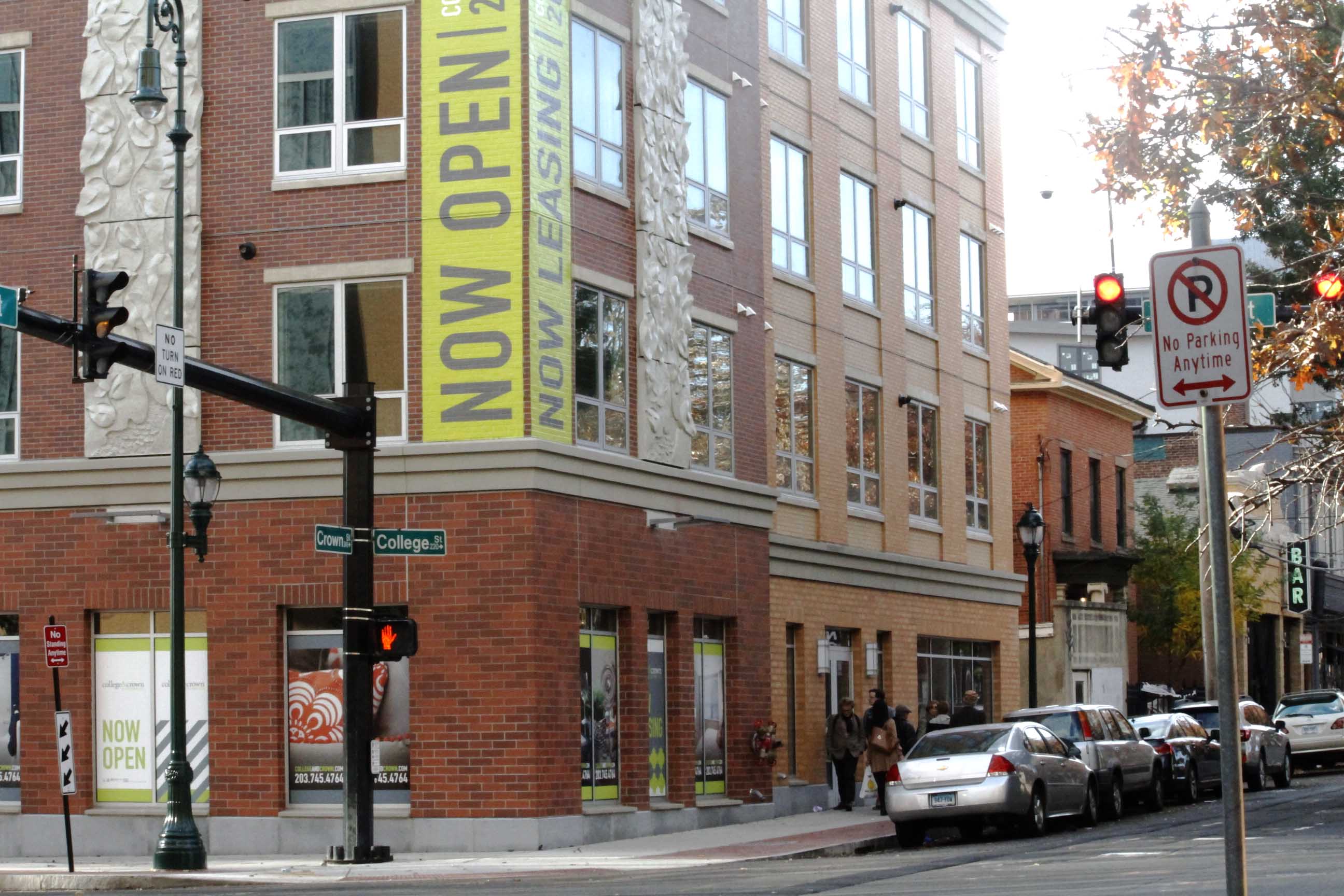
Mayor Toni Harp cut the ribbon in front of College & Crown: A Centerplace Thursday, welcoming another high-end development to the Elm City.
In the past month, city officials including Harp have publicly supported several new high-end developments in the city, speaking at their opening ceremonies. The rent of these apartments — which include the Ashmun Flats, the Novella and College & Crown: A Centerplace — can reach over $2,000, which is nearly double Elm City residents’ median housing budget of little over $1,000 per month. However, city hall officials support the developments because they will increase the availability of housing and lower the rent for middle-income families in the city, said Economic Development Administrator Matthew Nemerson SOM ’81, citing the recent slowdown in the growth of rental prices.
“People make the confusion that the highest rent on the market drags up cost,” Nemerson said. “But, only a shortage of supply would drag up all markets.”
As wealthier families move into the new developments, old apartments’ landlords will lower their rents to compete, Nemerson said. Housing prices for middle-income families would only increase as a result of new high-end developments if not enough units were built to meet demand, Nemerson said. He cited Boston and San Francisco as two examples of cities where expensive new developments pushed up rent prices because the housing shortage was so severe.
Though New Haven has one of the country’s lowest vacancy rates, the 2,000 new apartment units that have gone or will go on the market will likely provide enough supply to avoid rent inflation, Nemerson said. He added that the recent slowdown in the growth of rental prices is an early indicator of sufficient supply.
By speaking with landlords, city officials know rental price growth has slowed, Nemerson said. He added that exact data about the housing market today will not be available for several years.
“I get a lot more complaints from landlords who ask me to stop building because I can’t raise my rents anymore,” Nemerson said. “But I tell them that maybe that is [okay].”
Kadir Catalbasoglu, the owner of Brick Oven Pizza and a landlord for several residential homes in the city including one on Dixwell Avenue behind Payne Whitney, said his observations confirm Nemerson’s statements about housing prices. The market prices of housing mushroomed starting five or six years ago, he said. But prices have grown slower over the last six months to a year. He added that he did not know if the trend was directly attributable to the boom in new high-end developments.
Though the growth rate of rent has undoubtedly slowed, City Hall officials overestimate the potential impact on the average middle-income family, said Edward Mattison LAW ’68, a member of the mayor’s City Plan Committee. The market rate for housing is still far above what most Elm City families can afford, Mattison said.
“We’re a fairly low-income city,” Mattison said. “There is a relatively small group of people who have substantial incomes but most people living in the city work at moderate-income-paying jobs and their ability to spend on housing is largely capped out.”
Supporting new developments is one of only two ways for city officials to alleviate housing challenges in the city, Nemerson said, with the other option being to vie for increasingly scarce federal and state funding for affordable housing projects. When relying on new developments, city officials must consider that the high cost of buying land and building pressures developers to seek wealthier tenants, Nemerson said.
He added city officials also support the new apartment complexes because they will attract new residents. History has shown economically successful cities are often “commute sheds” — cities where people live and play, but do not work, Nemerson said. Over 1 million jobs exist within an hour’s commuting radius of New Haven, Nemerson said. The new developments will attract workers from even more expensive cities to live and spend their incomes in the Elm City.
Mattison said he has noticed many young professionals choosing to relocate to New Haven from more expensive areas such as Manhattan, Stamford or White Plains. But considering the vacancy rates in several of the new developments, city officials should still question whether the demand for the new high-end housing can fill over 2,000 new units, Mattison said.
The median annual income for renting households in New Haven is $27,452.







